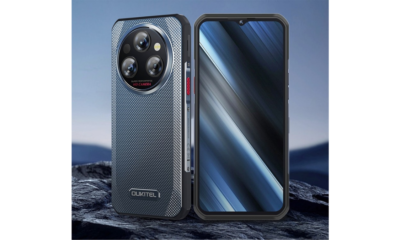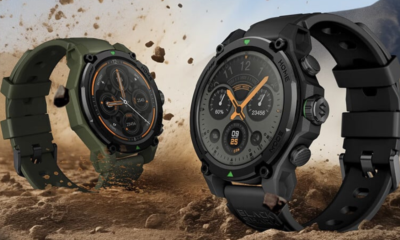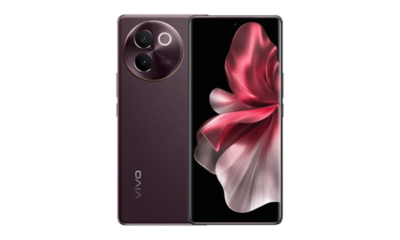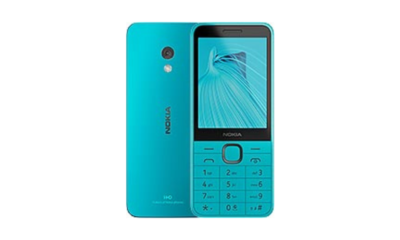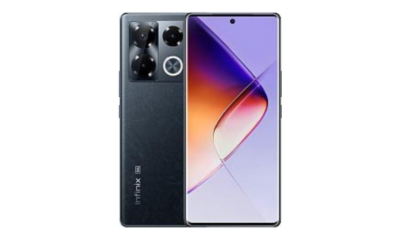Reviews
Tecno Spark 20 Pro+ Review
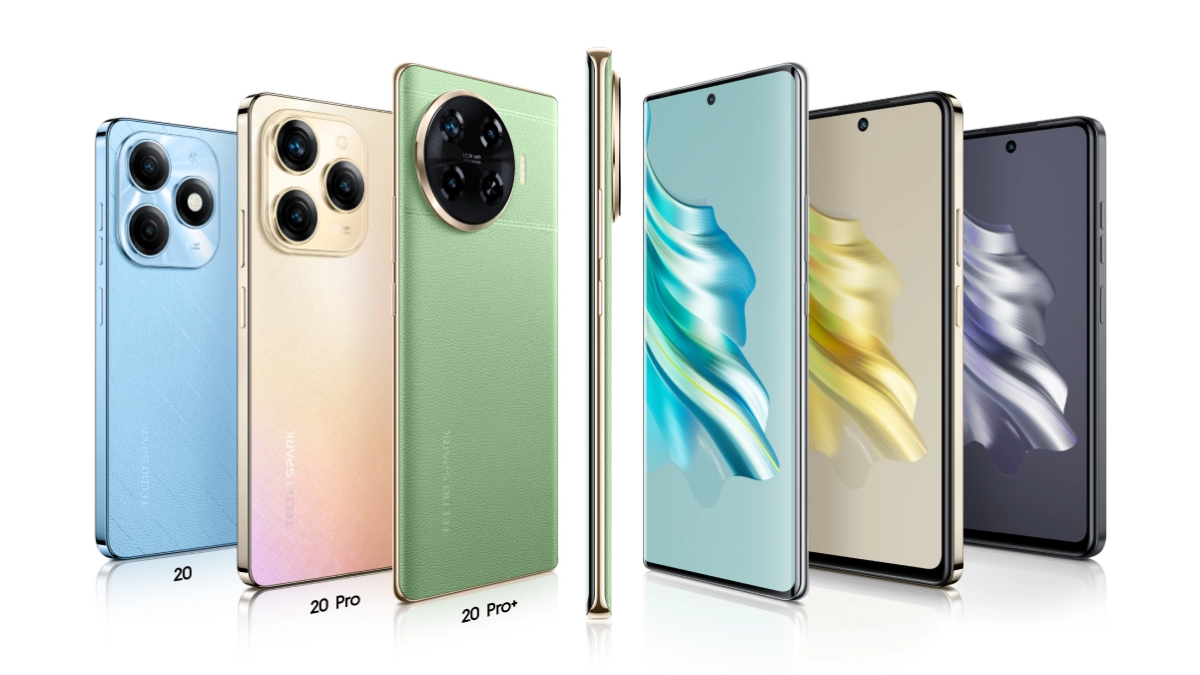
Tecno, a prominent player in the mid-range smartphone market, has unveiled its newest addition to the Spark 20 series – the Spark 20 Pro+. Positioned as a budget-friendly option with premium features, the Spark 20 Pro+ aims to provide users with a compelling smartphone experience without breaking the bank. In this review, we delve into the various aspects of the device to evaluate its performance, design, camera capabilities, and more.
Design and Build Quality
The Tecno Spark 20 Pro+ boasts an eye-catching design with a curved profile and a sleek, shiny frame. The back panel, available in a variety of colors including green with vegan leather and other matte finishes, adds a touch of sophistication to the device. However, the oversized camera housing detracts slightly from the overall aesthetic appeal. Despite this minor flaw, the phone feels solidly built, with no noticeable flex or hollowness.
Display
Featuring a 6.78-inch AMOLED display with a resolution of 1080 x 2436 pixels and a 120Hz refresh rate, the Spark 20 Pro+ delivers vibrant colors and smooth visuals. The display is bright and crisp, making it ideal for multimedia consumption and gaming. However, the lack of HDR support is a notable drawback.
Performance and Battery Life
Powered by the MediaTek Helio G99 Ultimate chipset and 8GB of RAM, the Spark 20 Pro+ offers smooth performance for everyday tasks and casual gaming. The 5,000mAh battery provides respectable endurance, although heavy gaming sessions can drain it quickly. Fortunately, the device supports 33W fast charging, allowing for speedy recharges.
Camera Capabilities
Equipped with a 108MP main camera and a 32MP selfie camera, the Spark 20 Pro+ delivers decent photography capabilities. Daylight shots exhibit good detail and color reproduction, although dynamic range could be improved. Low-light performance is acceptable, with the Super Night mode enhancing visibility in darker environments. However, the absence of an ultrawide camera limits the device’s versatility.
Software and Features
Running on Android 14 with Tecno’s HiOS 13.6.0 overlay, the Spark 20 Pro+ offers a range of features and customization options. While the software is relatively intuitive to use, the lack of the latest HiOS version and uncertain software support duration may deter some users.
Pros and Cons
Pros:
– Stylish and durable design
– High-quality display with smooth refresh rate
– Long-lasting battery with fast charging
– Capable camera performance in well-lit conditions
– Solid overall performance for its price range
– Rich retail package with additional accessories
Cons:
– Oversized camera housing detracts from design
– Lack of HDR support for display
– Unstable Wi-Fi connectivity on some units
– Uncertain software support duration from Tecno
In conclusion, the Tecno Spark 20 Pro+ offers a compelling package for budget-conscious consumers seeking a smartphone with premium features. Despite some minor flaws, such as the oversized camera housing and software version discrepancies, the device excels in key areas such as design, display quality, and camera performance. Overall, the Spark 20 Pro+ represents excellent value for money and is worth considering for anyone in the market for an affordable yet capable smartphone.
Reviews
Xiaomi Pad 6S Pro 12.4 Review

Xiaomi continues to push boundaries in the realm of technology with its latest release, the Xiaomi Pad 6S Pro 12.4. Announced on February 22, 2024, this cutting-edge tablet boasts an array of features that promise to elevate the user experience to new heights.
Design and Display
The Xiaomi Pad 6S Pro 12.4 showcases a sleek and sophisticated design, with dimensions measuring 278.7 x 191.6 x 6.3 mm and a weight of 590g. Its build includes a durable combination of Gorilla Glass 5 on the front, an aluminum frame, and an aluminum back. The device also offers stylus support, making it ideal for creative professionals and note-takers.
Featuring a stunning 12.4-inch IPS LCD display with 144Hz refresh rate, HDR10, and Dolby Vision support, the Xiaomi Pad 6S Pro delivers vibrant colors and immersive visuals. With a resolution of 2032 x 3048 pixels and a peak brightness of 900 nits, every detail comes to life with clarity and precision.
Performance and Hardware
Under the hood, the Xiaomi Pad 6S Pro is powered by the latest Android 14 operating system, coupled with HyperOS for seamless multitasking and enhanced performance. It houses the Qualcomm Snapdragon 8 Gen 2 chipset, built on a 4nm process, ensuring lightning-fast speed and efficiency.
Equipped with an octa-core CPU and Adreno 740 GPU, this tablet delivers exceptional performance for gaming, productivity, and multimedia tasks. Users can choose from multiple configurations, including options with up to 1TB of storage and 16GB of RAM, providing ample space for apps, games, and media files.
Camera and Audio
The Xiaomi Pad 6S Pro features a dual-camera setup on the rear, comprising a 50MP wide lens and a 2MP depth sensor, capable of capturing stunning images and videos in various lighting conditions. On the front, a 32MP wide selfie camera ensures crisp and clear video calls and selfies.
In the audio department, the tablet comes equipped with stereo speakers, delivering immersive sound quality for multimedia consumption. With support for 24-bit/192kHz Hi-Res audio and Hi-Res Wireless audio, users can enjoy an enhanced listening experience with rich, detailed sound.
Connectivity and Battery
Connectivity options on the Xiaomi Pad 6S Pro include Wi-Fi 802.11 a/b/g/n/a/6/7, Bluetooth 5.3, NFC for file transfer, and a USB Type-C 3.2 port for charging and data transfer. The tablet also features a side-mounted fingerprint sensor for added security and convenience.
One of the standout features of the Xiaomi Pad 6S Pro is its massive 10,000mAh battery, providing long-lasting power for extended usage sessions. With support for 120W wired charging, users can recharge their device quickly, with advertised charging times of 45% in just 10 minutes and 100% in 35 minutes.
Price and Availability
The Xiaomi Pad 6S Pro is available in a range of attractive colors, including Black, Blue, and Green, catering to different style preferences. With a price tag of approximately 700 EUR, this tablet offers exceptional value for money, combining premium design, powerful performance, and innovative features.
Reviews
Nokia 235 4G Review
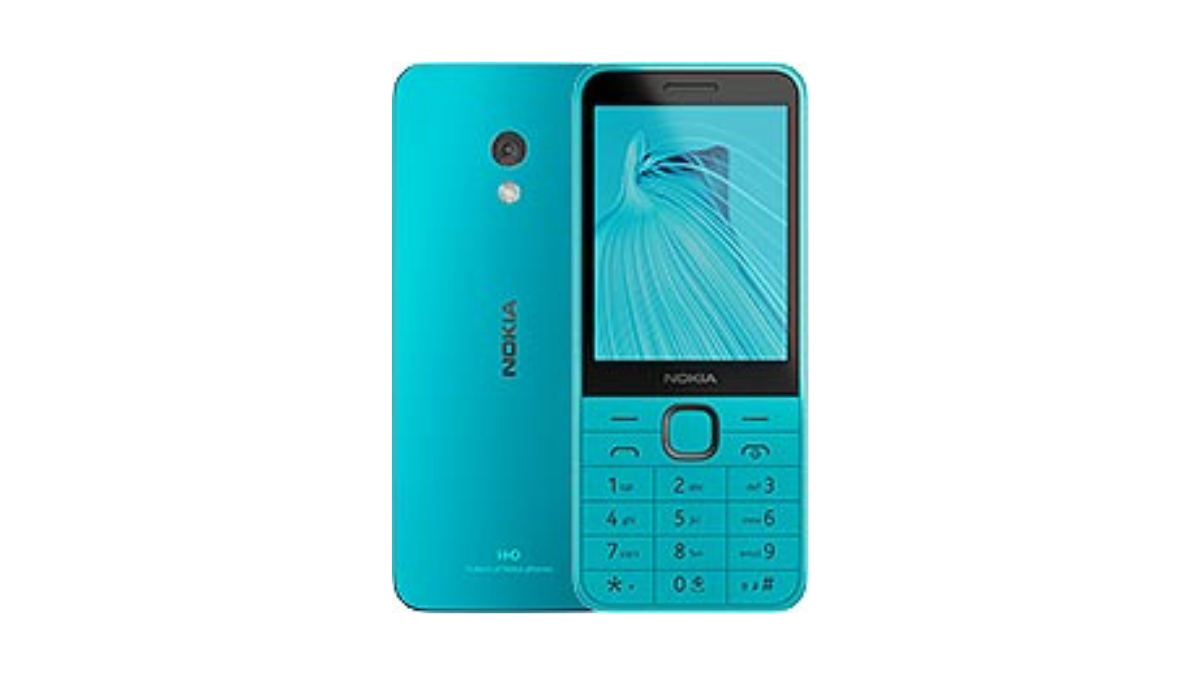
Nokia, a renowned name in the realm of mobile technology, has unveiled its latest offering, the Nokia 235 4G, set to hit the markets in May 2024. This compact device boasts a blend of simplicity and functionality, catering to users seeking reliability and affordability in their mobile experience.
Design and Display
The Nokia 235 4G sports a minimalist design with dimensions yet to be disclosed. Its dual SIM capability, supporting Nano-SIM cards on dual standby mode, ensures connectivity without compromise. The device features a 2.8-inch TFT LCD display, offering a modest resolution of 240 x 320 pixels and a 4:3 aspect ratio, yielding approximately 143 pixels per inch. While not pushing the boundaries of display technology, the Nokia 235 4G provides a sufficient viewing experience for its target audience.
Performance and Memory
Under the hood, the Nokia 235 4G is powered by the Unisoc T107 chipset, fabricated on a 22-nanometer process. Its 1.0 GHz Cortex-A7 CPU delivers adequate performance for everyday tasks, promising smooth operation. With a modest 64MB of RAM and 128MB of internal storage, expandable via microSDHC card slot, users can store essential apps, media, and files without constraints.
Camera and Audio
Equipped with a 2MP rear camera featuring an LED flash, the Nokia 235 4G enables users to capture moments on the go. While not designed for professional photography, this camera setup suffices for casual snapshots and basic imaging needs. Additionally, the device includes a loudspeaker and a 3.5mm audio jack, ensuring decent audio output for multimedia consumption and communication purposes.
Connectivity and Features
In terms of connectivity, the Nokia 235 4G lacks Wi-Fi capability but compensates with Bluetooth 5.0 support for seamless wireless communication. While devoid of advanced sensors and positioning features, the device supports essential functionalities such as SMS messaging and basic gaming. Users can also enjoy their favorite tunes via the built-in MP3 player and access cloud-based applications through the Cloud Apps portal.
Battery and Miscellaneous
Powering the Nokia 235 4G is a removable 1450mAh Li-Ion battery, offering adequate longevity for typical daily usage. Available in classic color options including Black, Blue, and Purple, the device presents a choice to match diverse preferences.
In summary, the Nokia 235 4G embodies Nokia’s commitment to delivering reliable mobile solutions tailored to the needs of budget-conscious consumers. With its modest specifications and emphasis on essential features, this device aims to provide a straightforward and dependable mobile experience without breaking the bank. While not groundbreaking in terms of innovation, the Nokia 235 4G serves as a viable option for users seeking a no-frills communication device with a touch of Nokia’s renowned durability and craftsmanship.
Reviews
Infinix Note 40 Pro+ Review
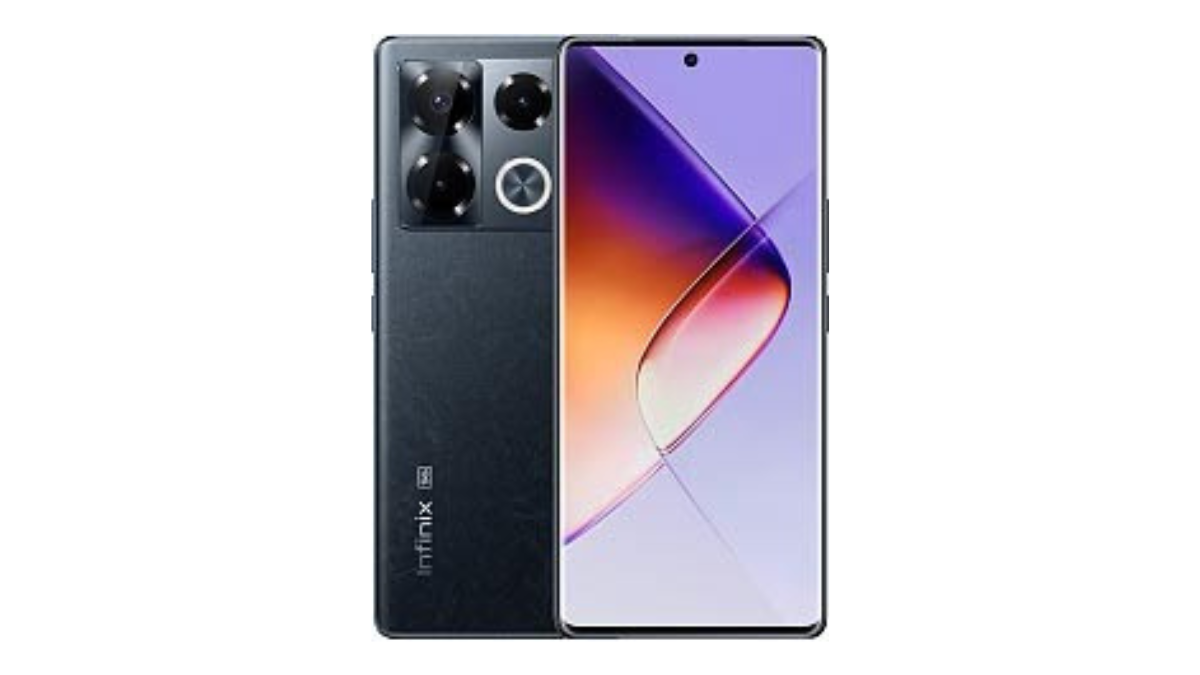
Infinix has unveiled its latest flagship device, the Infinix Note 40 Pro+, setting a new standard for connectivity and performance in the smartphone market. With an extensive range of network capabilities and advanced features, this device promises to redefine the mobile experience for users worldwide.
Connectivity Beyond Limits
The Infinix Note 40 Pro+ supports a comprehensive range of network technologies, including GSM, HSPA, LTE, and 5G. With support for multiple frequency bands across 2G, 3G, 4G, and 5G networks, users can enjoy seamless connectivity regardless of their location. Whether it’s streaming high-definition content, engaging in video calls, or downloading large files, the Note 40 Pro+ ensures lightning-fast speeds and reliable connectivity.
Cutting-Edge Specifications
Powered by Android 14 and XOS 14, the Infinix Note 40 Pro+ combines the latest software innovations with powerful hardware components. Equipped with a MediaTek Dimensity 7020 chipset and an octa-core CPU, this device delivers exceptional performance for multitasking, gaming, and multimedia consumption. With 12GB of RAM and 256GB of internal storage, users can enjoy ample space for their apps, games, photos, and videos.
Immersive Display and Audio
Featuring a stunning 6.78-inch AMOLED display with a 120Hz refresh rate and Corning Gorilla Glass protection, the Note 40 Pro+ offers an immersive viewing experience with vibrant colors and sharp detail. With a peak brightness of 1300 nits, users can enjoy clear visibility even in bright outdoor conditions. Moreover, the device is equipped with stereo speakers tuned by JBL, delivering rich, immersive sound for an unparalleled audio experience.
Capture Every Moment
The Infinix Note 40 Pro+ is equipped with a versatile triple camera setup, including a 108MP main camera, along with two 2MP auxiliary cameras. Whether it’s capturing breathtaking landscapes, detailed close-ups, or stunning portraits, users can expect exceptional clarity and detail in every shot. On the front, a 32MP selfie camera ensures stunning self-portraits and video calls, even in low-light conditions.
Innovative Features
In addition to its impressive specifications, the Infinix Note 40 Pro+ boasts a range of innovative features designed to enhance the user experience. With IP53 dust and splash resistance, users can rest assured that their device is protected against the elements. Moreover, the device supports advanced charging technologies, including 100W wired charging and 20W wireless MagCharge, ensuring fast and efficient charging on the go.
Unmatched Value
Available in two stunning colors, Obsidian Black and Vintage Green, the Infinix Note 40 Pro+ offers unmatched value for money. With its premium design, cutting-edge features, and competitive pricing, this device is poised to become a favorite among tech enthusiasts and casual users alike.
In summary, the Infinix Note 40 Pro+ redefines the smartphone experience with its advanced connectivity, powerful performance, and innovative features. Whether it’s for work, entertainment, or photography, this device delivers a truly immersive and seamless user experience, setting a new benchmark for smartphones in its class.
-
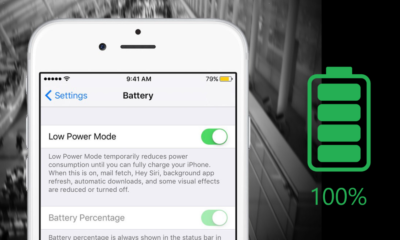
 How To8 months ago
How To8 months agoHow To Make Your Battery Last Longer On Your Gadget
-

 How To6 months ago
How To6 months agoHow To Use Voice Commands for Hands-Free Control.
-

 How To6 months ago
How To6 months agoHow To Unlock Your Smartphone If You Forget the PIN
-

 Reviews9 months ago
Reviews9 months agoSamsung Galaxy Watch 6 vs. Galaxy Watch 6 Classic: A Timeless Face-off!
-
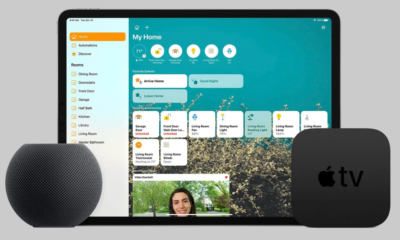
 Best Smart Home Gadgets7 months ago
Best Smart Home Gadgets7 months agoHow To Set Up a Smart Home: A Comprehensive Guide
-
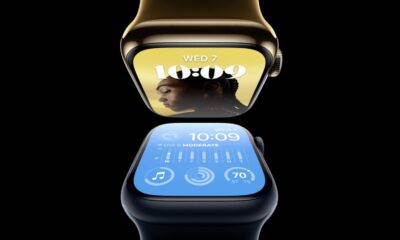
 Tech News9 months ago
Tech News9 months agoGurman: Apple Watch Redesigned ‘Apple Watch X’
-
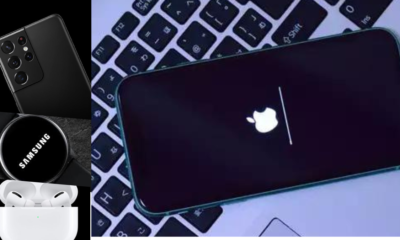
 How To6 months ago
How To6 months agoHow to Troubleshoot Common Gadget Problems
-
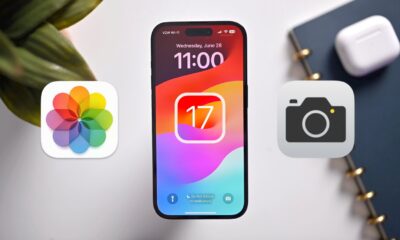
 Apps9 months ago
Apps9 months agoPhoto Magic: How To Use Quick Crop on iPhone Photos App iOS 17

